How to prepare for a hurricane like Irma - which could soon hit the US and Caribbean
Remain cautious after a storm passes.

Stay away from windows if there's heavy wind.
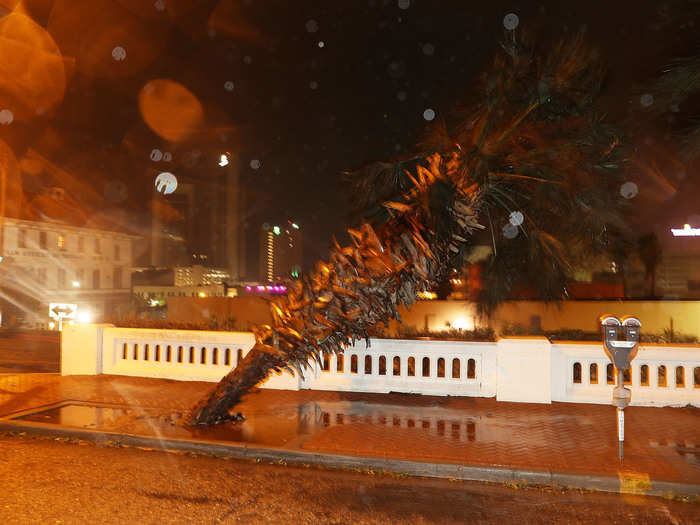
The categories of hurricanes are defined by their wind force. Irma is currently a Category 5 storm, which means its wind speeds are at least 157 mph. But there's no category above 5, which makes it hard to differentiate between the most severe hurricanes. (Irma’s wind speeds are estimated to be as high as 185 mph.)
When heavy winds arrive, stay away from windows, since fast-moving debris could break the glass and fly into the house. FEMA recommends seeking shelter on the home’s lowest level, in an interior room, though a flood risk could change that calculation.
If you’re bracing for extreme winds, you should also reinforce doors, windows, walls, and roofs as much as possible in advance. Putting tape on windows does not help, however, since it could cause the glass to break into larger, deadlier shards. The DHS recommends bringing any outdoor objects (like patio tables and chairs) inside, and anchoring anything that shouldn’t be indoors (like propane tanks).
If you have more time to prepare your house, the DHS recommends trimming and removing damaged trees and limbs to minimize the risk of them falling and causing damage or injuries. It may also be a worthwhile long-term investment to retrofit and secure your roof, windows, and doors, or to add storm shutters.
Ready your house for flooding.
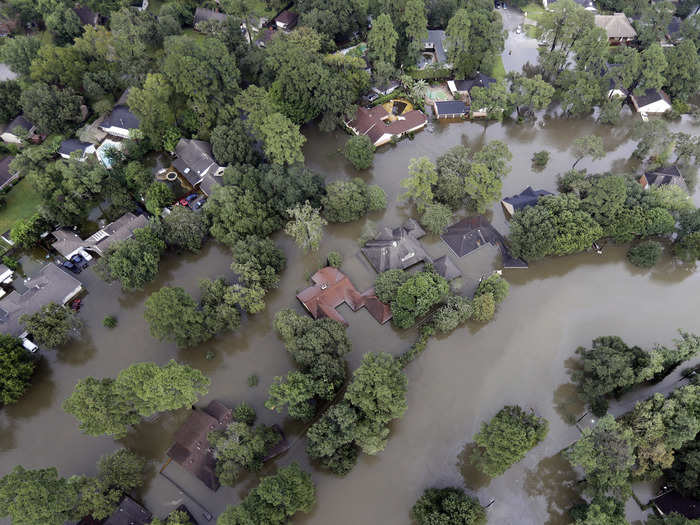
If heavy rainfall and flooding is a risk where you live, there are both cheap and expensive ways to prepare.
The simplest is to secure rain gutters to the house and clear clogged areas or drains to prevent water from building up and causing damage. You can also stockpile sand bags, plastic sheeting, and plywood to be used as necessary.
If you have time, it’s a good idea to unplug appliances, and move any light furniture and valuables to higher floors of your house or building. (This is risky in an event of heavy wind, however, which can blow rooftops and upper floors off of homes.)
More costly preparations include installing sump pumps with backup batteries and a water alarm to alert you when the system is getting overloaded. It’s also a good idea to waterproof your basement if you live in a flood-prone area, and to elevate your heating system, water heater, and electric panel to heights at which flood waters won’t cause damage.
The most important (though often most difficult) precaution to take is avoiding walking or driving through flood waters. Even 6 inches of fast-moving water can knock a person down, and 12 inches can sweep away a car. The water can also hide dangerous debris and make it hard to tell where the ground has washed away. Plus, there’s a risk of electricity from downed power lines, contamination from sewage and other chemicals, and wildlife like snakes and fire ants trying to escape.
Prepare for power outages.

It’s common for power to go out during a major storm — an estimated 300,000 people were without it after Hurricane Harvey hit.
Because lighting candles can create a fire risk, flashlights with extra batteries are key. The DHS also recommends that you keep your cell phone fully charged as long as you have electricity.
If you're anticipating that power might go out, it’s also a good idea to turn your freezer and refrigerator to their coldest settings about 6 hours before a storm hits. That way, food will last longer if the power goes out. You can also move things to the freezer if you won’t need them right away.
If your house loses power, avoid opening the fridge and freezer doors as much as possible to keep cold air in. Watch the thermometer on those appliances — once perishable foods like meat, poultry, and milk have been stored above 40 degrees Fahrenheit for more than two hours, they should be thrown out. Freezing ice packs and preparing coolers to store food can help keep things fresh for longer.
It is possible, of course, to buy a portable generator or get one installed if you’re planning far ahead. But any generator should be protected from moisture and kept outside, well away from any windows or doors.
Because there is also a chance water will be cut off after power has gone out, FEMA recommends filing sinks and bathtubs in order to have extra water to use for flushing toilets or washing.
Evacuate only if it's recommended or mandatory.
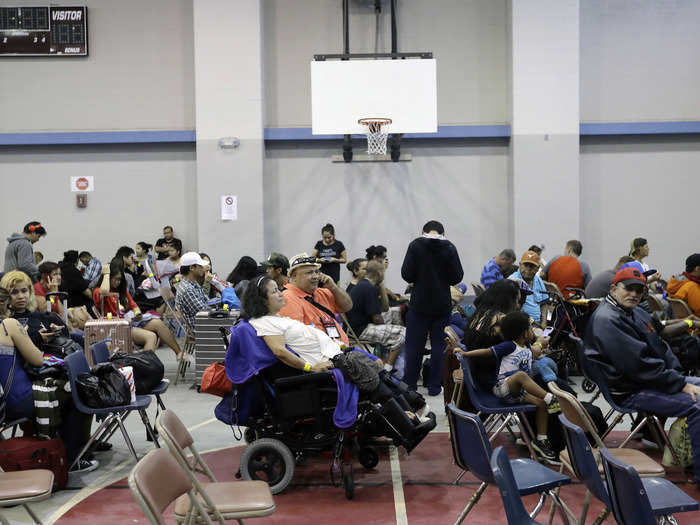
The most common reason for mandatory evacuation orders is a storm surge warning — that’s the crest of water that forms from a storm’s powerful winds. If you live in an area that could face such a threat, make an evacuation plan with your family that includes which roads you’ll take and where you’ll go. Generally, emergency shelters are set up in the days ahead of a storm, so you can consult FEMA or your local city government to determine where those will be.
However, some cities have good reason to avoid issuing evacuation orders. When Harvey hit Houston, officials didn't tell residents to leave in order to avoid clogging highways and other roads. Those drivers could have found themselves getting into accidents or stuck in bumper-to-bumper traffic as waters overtook roadways. When Hurricane Rita barreled toward Texas in 2005, an exodus of about 3 million people contributed to at least 73 deaths before the storm arrived.
So if there’s no voluntary or mandatory evacuation in place for your area, stay put and keep your car in good working condition with a full gas tank in case a late evacuation order does come. Once a mandatory evacuation is put in place, however, you should leave immediately. That’s why it’s important to have a go-bag prepared.
Create an emergency plan for your family.
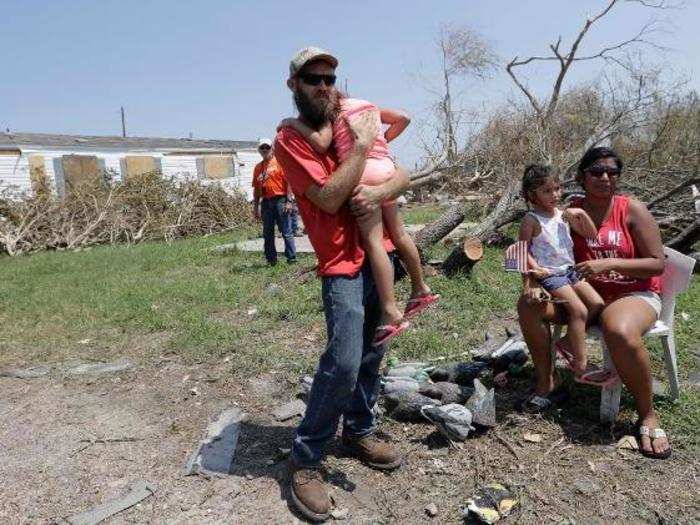
FEMA and the DHS say it’s essential to come up with an emergency plan for your family long before a disaster arrives. This plan should include packing your emergency supply kit and go-bag. It should also cover what you’ll do in the event of a mandatory evacuation — which routes are safest in hurricanes, where all members of a household should try to go, etc.
Additionally, you should pick an out-of-state contact that everyone will get in touch with in the event that your family gets separated. Each person should carry a sheet in their wallet with that person's contact information, as well as other important numbers and information. (Phones can always die, and most of us no longer memorize phone numbers or addresses the way we used to.)
In an ideal scenario, families should practice these plans ahead of time to work out any kinks and gain comfort with them before encountering stressful conditions.
To keep track of a developing storm, you can also sign up for alerts from the National Weather Service (NWS) and National Oceanic and Atmospheric Administration (NOAA).
Gather supplies in advance.
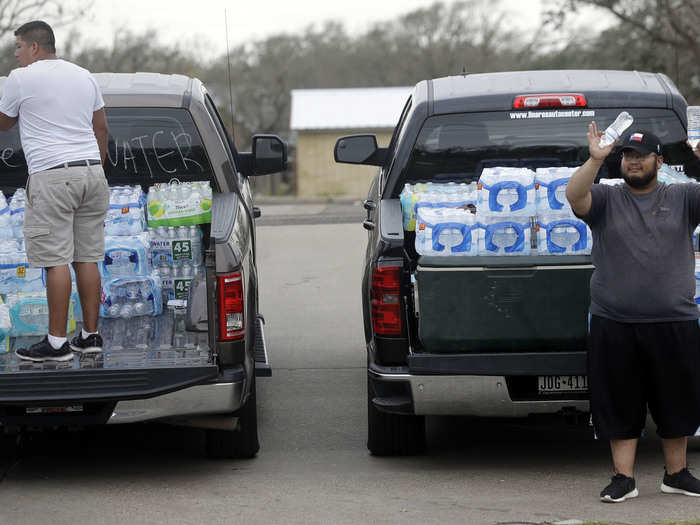
FEMA recommends keeping an emergency supply kit on hand at all times — especially when the threat of a severe weather event arises. The kit should include:
- At least one gallon of water per person in the household per day for three days
- A three-day supply of non-perishable food, and a can opener if necessary (including for your pet)
- Any important family documents (insurance policy statements, bank account information, passports, birth certificates, etc.)
- A battery-powered or hand-crank radio
- A flashlight with extra batteries
- A first-aid kit
- A week’s supply of any prescription medications, and an extra pair of glasses
- Cash
- A complete change of clothing
- Local maps
- A whistle in case you need to signal for help
- A dust mask
- Duct tape
- Moist towelettes
- Garbage bags
- A wrench or pair of pliers
- Infant formula and diapers if you have young children
The most essential items on this list — whatever can be carried — should be packed in advance in a go-bag that can be grabbed quickly if an evacuation becomes necessary. Since grocery stores empty out and prices get gouged in an emergency situation, stocking up ahead of time is best.
Here are FEMA's full emergency supply list guidelines.
Popular Right Now
Popular Keywords
Advertisement